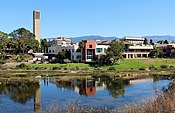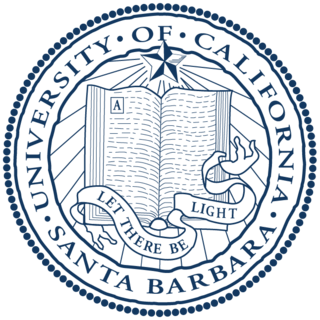
The University of California, Santa Barbara is a public land-grant research university in Santa Barbara County, California, United States. Tracing its roots back to 1891 as an independent teachers' college, UCSB joined the University of California system in 1944. It is the third-oldest undergraduate campus in the system, after UC Berkeley and UCLA.

The College of Creative Studies (CCS) is the smallest of the three undergraduate colleges at the University of California, Santa Barbara, unique within the University of California system in terms of structure and philosophy. Its small size, student privileges, and grading system are designed to encourage self-motivated students with strong interests in a field to accomplish original work as undergraduates. A former student has called it a “graduate school for undergraduates”. The college has roughly 350 students in nine majors and approximately 60 professors and lecturers. There is an additional application process to the standard UC Santa Barbara admission for prospective CCS students, and CCS accepts applications for admissions throughout the year.

Herbert Kroemer was a German-American physicist who, along with Zhores Alferov, received the Nobel Prize in Physics in 2000 for "developing semiconductor heterostructures used in high-speed- and opto-electronics". Kroemer was professor emeritus of electrical and computer engineering at the University of California, Santa Barbara, having received his Ph.D. in theoretical physics in 1952 from the University of Göttingen, Germany, with a dissertation on hot electron effects in the then-new transistor. His research into transistors was a stepping stone to the later development of mobile phone technologies.
The University of California, Berkeley College of Engineering is the public engineering school of the University of California, Berkeley. Established in 1931, it occupies fourteen buildings on the northeast side of the main campus and also operates the 150-acre (61-hectare) Richmond Field Station. It is also considered highly selective and is consistently ranked among the top engineering schools in both the nation and the world.
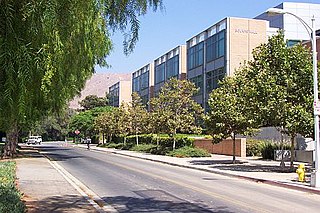
The Marlan and Rosemary Bourns College of Engineering, commonly known as 'Bourns Engineering' or 'BCOE', is a college of engineering at the University of California, Riverside. The college was established in 1989, and named in honor of Marlan and Rosemary Bourns, founders of Bourns, Inc. It is accredited by the Accreditation Board for Engineering and Technology.
Arthur C. Gossard was a professor of materials and electrical engineering at the University of California, Santa Barbara. In 1982, he co-discovered the fractional quantum Hall effect. His research is related to molecular beam epitaxy (MBE). He has a doctorate in physics from UC Berkeley. After university, he joined Bell Labs.

The Fannie and John Hertz Foundation is an American non-profit organization that awards prestigious fellowships to Ph.D. students in the applied physical, biological and engineering sciences. The fellowship provides students with up to $250,000 of support over five years, giving them flexibility and the ability to pursue their own interests, as well as mentoring from alumni fellows. Fellowship recipients pledge to make their skills available to the United States in times of national emergency.
Petar V. Kokotovic is professor emeritus in the College of Engineering at the University of California, Santa Barbara, USA. He has made contributions in the areas of adaptive control, singular perturbation techniques, and nonlinear control especially the backstepping stabilization method.

The San Diego State University College of Engineering provides San Diego State University (SDSU) students with undergraduate and graduate engineering education. The College of Engineering offers eight degree programs. The aerospace engineering, civil engineering, computer engineering, electrical engineering, environmental engineering, mechanical engineering, and construction engineering programs are accredited by the Engineering Accreditation Commission of ABET.
The University of California, Irvine has over fourteen academic divisions.
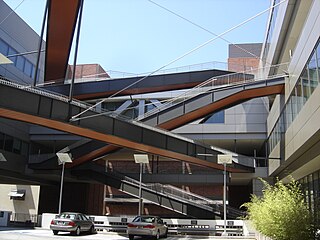
The California NanoSystems Institute (CNSI) is an integrated research center operating jointly at UCLA and UC Santa Barbara. Its missions are to foster interdisciplinary collaborations for discoveries in nanosystems and nanotechnology; train the next generation of scientists, educators, and technology leaders; and facilitate partnerships with industry, fueling economic development and the social well-being of California, the United States and the world.

The Henry Samueli School of Engineering (HSSoE) is the academic unit of the University of California, Irvine that oversees academic research and teaching in disciplines of the field of engineering. Established when the campus opened in 1965, the school consists of five departments, each of which is involved in academic research in its specific field, as well as several interdisciplinary fields. The school confers Bachelor of Science, Master of Science, and Doctor of Philosophy degrees.
The Irwin and Joan Jacobs School of Engineering is an undergraduate and graduate-level engineering school offering BS, BA, MEng, MS, MAS and PhD degrees at the University of California, San Diego in San Diego, California. The Jacobs School of Engineering is the youngest engineering school of the nation's top ten, the largest by enrollment in the University of California system, as well as the largest engineering school on the West Coast and the ninth-largest in the country. More than thirty faculty have been named members of the National Academies. The current dean of the Jacobs School of Engineering is Albert P. Pisano.

The John and Marcia Price College of Engineering at the University of Utah is an academic college of the University of Utah in Salt Lake City, Utah. The college offers undergraduate and graduate degrees in engineering and computer science.
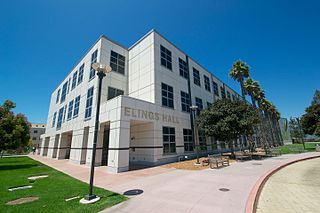
The AlloSphere is a research facility in a theatre-like pavilion in a spherical shape, of opaque material, used to project computer-generated imagery and sounds. Included are GIS, scientific, artistic, and other information. Located at the University of California, Santa Barbara (UCSB) the AlloSphere grew out of the schools of electrical engineering and computer science, and the Media Arts & Technology program at UCSB.
The Physics Department at the University of California, Santa Barbara has 58 faculty members. It offers academic programs leading to the B.A., B.S., and Ph.D. degrees.
The College of Letters and Science is the largest college at the University of California, Santa Barbara. The College, which offers 90 majors and 38 minors to over 20,000 undergraduates and 2,000 graduate students, has about 700 faculty members.
Francis "Frank" J. Doyle III is an American engineer and academic administrator. He is a professor of Engineering and provost of Brown University.
The Institute for Energy Efficiency (IEE) is a research institute of the University of California, Santa Barbara (UCSB). IEE is an interdisciplinary research institute dedicated to the development of science and technologies that increase energy efficiency, reduce energy consumption, and support an efficient and sustainable energy future.











